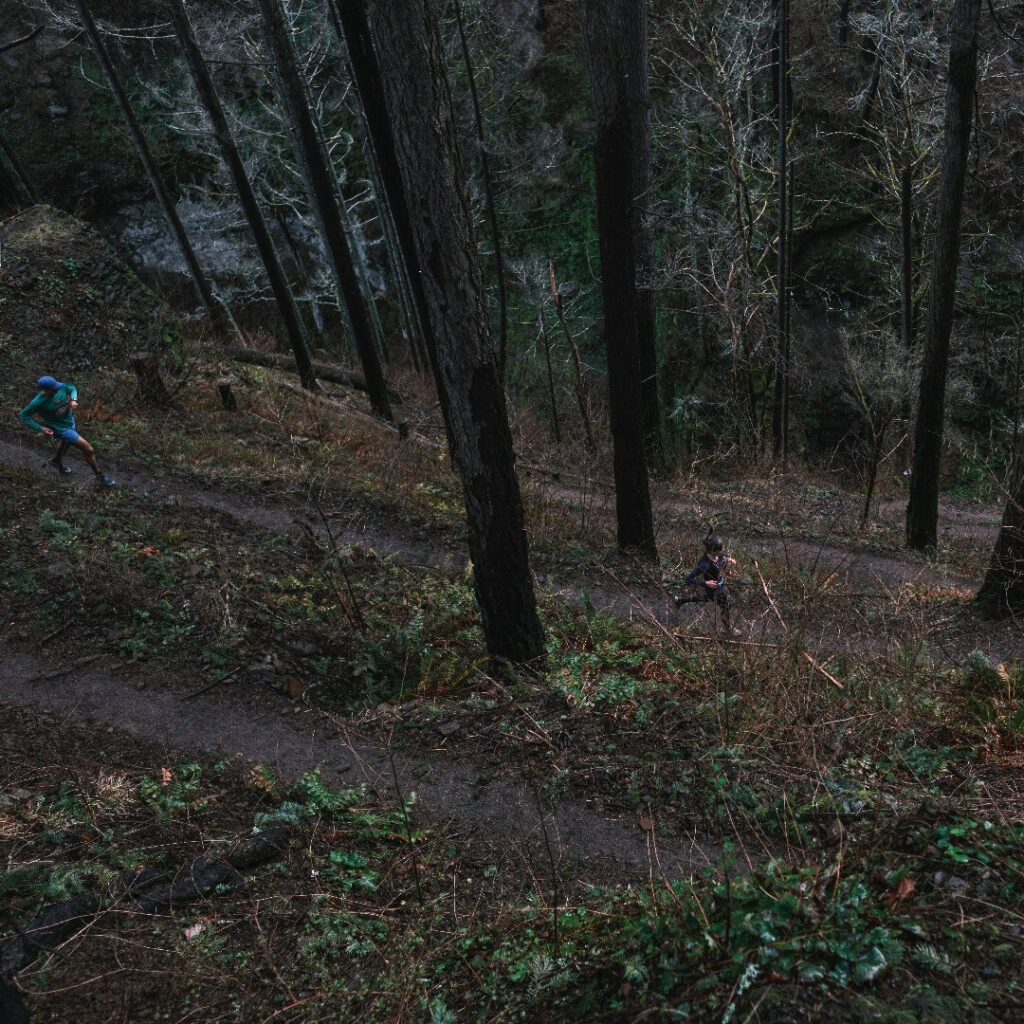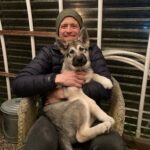In my mid-twenties I started running along a boulevard on the northwest side of Chicago. One in a series of greenways strung about the city, Logan Boulevard was a mile long stretch of parkland set between the roaring traffic of I-90 on one side and the Blue Line train plunging into a tunnel on the other. When the snow thawed I left the street to run the trail etched into the grass. Summer hit and the trees leafed out and for a moment I felt transported to a wilder place along this thread of unpaved earth.
It was incredible to run through a 19th century concept whose vision was still relatively clear: set aside and maintain a little park space for people in densely populated areas.
When I moved to Oregon I brought with me this municipal perspective to public land. I figured the green spots on the maps across the Pacific Northwest were “ours”. I assumed there were Forest Service workers out there – akin to the city workers mowing lawns and trimming trees – maintaining that land. And I knew nothing about the layered relations between extractive industries and public lands, believing that the REI sticker on my Nalgene – “I Heart Our Public Lands” – said what needed saying.
I learned that the story of where we get to recreate has more switchbacks than I’d ever imagined. It’s a story I am to this day still putting together.
I leave our apartment for a run starting west. I head up a gravel driveway towards a sandy trail slicing through knee-high dune grass, and in just a 100 or so yards from our door I’ve gone from a private lot to a public street up a private driveway into state-owned parkland. Having run this for years now I don’t think much about the legalities or history of where my feet fall.
Throughout my long weekend running loop I’ll weave through more jurisdictions. A beautiful forest preserve run by a family made wealthy by timber, a long grassy ridge owned by another family, and a slough trail owned by a mishmash of government agencies with stakes in marine science (the Hatfield Marine Science Center). There’s also a brief detour past the Oregon Coast Aquarium and a bacon-scented stretch by Fishtails Cafe.
Besides being the ancestral lands of descendants of the Confederated Tribes of Siletz, what ties this land together is the fact that I’m not going to get busted for trespassing on it. The governmental and private entities have okayed these spaces for public use. There is a free permit required for some of those family-owned sections of the run, but it’s acquired with a quick email.
Take a moment to ponder your favorite trail run. Whose land are you on? How was it acquired? And likely most relevant for your purposes, who is conserving it to ensure its future use for you and your crew?

My car hit fender-high snow on the remote logging road in the Willamette National Forest. I reversed to a bit of open shoulder and got out. I carried my tent out to a flat patch of meadow where after dark I crawled into my sleeping bag, resting up for my first scouting run in the morning.
We ran recently-thawed sections of single track until hitting snow. Every so often a tree blocked our way, and the race director dropped a pin on his phone. The plan was to return with chainsaws and shears to clear the way.
Wait, I began to think, the Forest Service doesn’t do this?
It hit me that without a race company out here doing volunteer work, the clearing wouldn’t be getting done.
That day I learned that the Forest Service is generally understaffed. That maintaining trails is not their primary task. That the race company partnered with other trail advocates in a community of people spending their free time logging out and brushing and otherwise breathing life into trails.
I later emailed Beth Dayton, a retired surgeon turned Cascade Volunteers Saw Program Coordinator (she certifies chainsaw use), about the connections between conservation and recreation. As much as half of the work that gets done on National Forest trails is done by unpaid volunteers. Without our advocacy, specific trails or a network of trails “might fall into such disrepair that it would be abandoned, or taken off the official trail registry.”
There is a classic division in environmental advocacy – conservation versus preservation, or land managed against land returned to wilderness. What ties both together is care. Those who believe active management of a natural area is a practical way to maintain its longevity likely have an emotional stake in that land. Those who say leave it alone, let it revert, are also speaking from a place of love.
While the land purists might not vibe with a race company bursting into the forest with hundreds of people every year, the fact is many of these forests are under pressure for development or heavy logging, and without our presence their fates are arguably less certain. As Dayton told me: “If no one could experience the rivers, forests, lakes and mountaintops there would be no one to go to battle when these areas are threatened.”
Speaking to Women’s Running in response to why trail running has been slow to come around to environmental action – compared to backcountry hunters and anglers, mountain bikers and whitewater boaters – coach and author Sarah Lavender Smith argued there’s “a lack of community organization” given our “solitary activity.”
This is starting to change.
Here at the Freetrail, a climate incubator called Footprints has been started to “help trail runners bring ideas for collective climate action to life.” The mission is to bring “knowledge, community, and connections” together among runners to “turn an idea into a reality or scale up their existing impact.”
Race companies are increasingly conscious of their footprints – cupless races used to be an exception, for example, but are now the standard. Shoe companies are partnering with environmental advocates: Topo Athletics, for example, joined the Conservation Alliance to help protect wild places. Run Wild was formed as part of the Outdoor Alliance network for trail runners to connect over political action to protect public lands.
Despite teaching a cultural history of American Wilderness to university students, and writing articles about environmental activism and nature in general, I had no idea that the trails I loved running were as fragile as they were. There is no corps of Forest Service workers out there. There is only the public and its passions.

They have started selective thinning part of that longer trail system near our apartment. At 9am and 1pm and 5pm during the week a logging truck comes snorting up out of the forest. On the weekends the public is free again to recreate.
Though I was told selective thinning is a sustainable form of forestry, seeing the hulking machinery sitting quiet until Monday unsettles the earthy part of my soul. I cannot disassociate the machines from the surrounding area, the checkerboard clearcuts. But this is romantic and unscientific – and it gets me thinking about conservation. It gets me thinking about which fights are winnable, since so many have long been lost. According to Pacific High, Tim Palmer’s book about travelling through the Oregon Coast Range, about 96% of the Range’s old growth has been logged since Europeans arrived.
Those green spots are only fixed on paper maps.
In reality they are living lands, political entities being discussed, debated and haggled over. Some have been set aside as National Parks or wildernesses. Those cannot be cut or mined or otherwise altered. In some sense those are wins.
What we’re interested in is the mixed use National Forest lands, the local parks or restoration projects, those spaces which can tip in the favor of extraction or recreation depending on a region’s interests. This is where knowing where we’re running is important. We cannot count on a beautiful forest remaining open just because we like it. By learning about and connecting with others engaged in the stewardship of public lands we will start to form coalitions, deepening our bonds not only to one another, but to the land itself.
